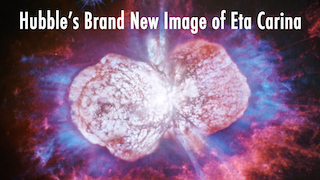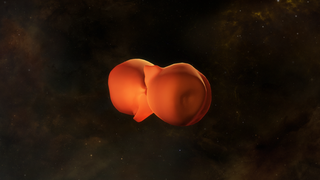Universe
ID: 11639
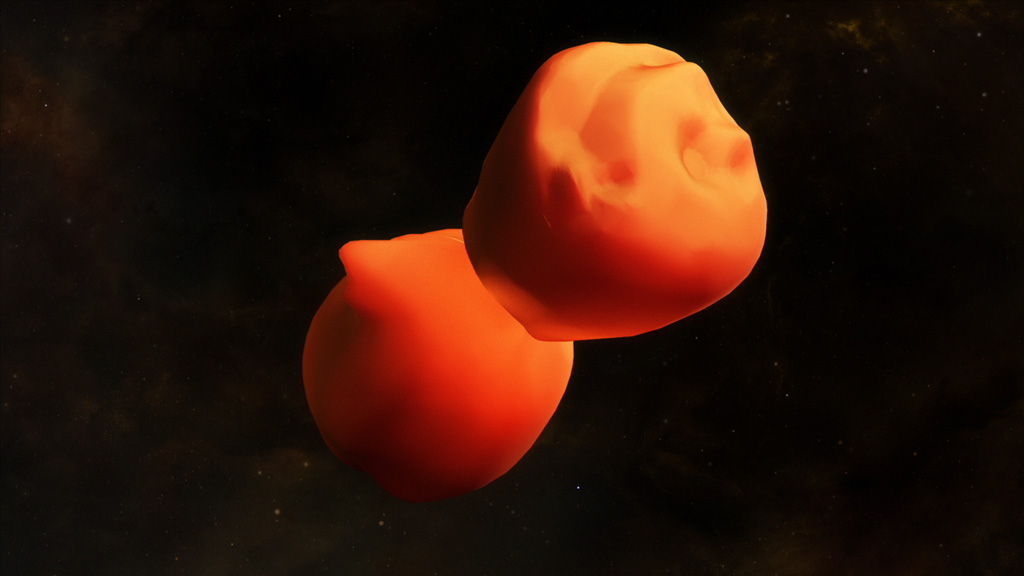
Eta Carinae lies about 7,500 light-years away in the southern constellation of Carina and is one of the most massive binary star systems in our Milky Way galaxy. In the middle of the 19th century, it underwent an explosion that astronomers call the Great Eruption. As a part of this event, a gaseous shell containing at least 10 and perhaps as much as 40 times the sun's mass was shot into space. Using new observations, astronomers created the first high-resolution 3-D model of the expanding cloud produced by this outburst. The model suggests the twin-lobed dust-filled cloud known as the Homunculus Nebula—which is now about a light-year long and continues to expand at more than 1.3 million mph—was molded by interactions between Eta Carinae's two stars. Watch the video to learn more.

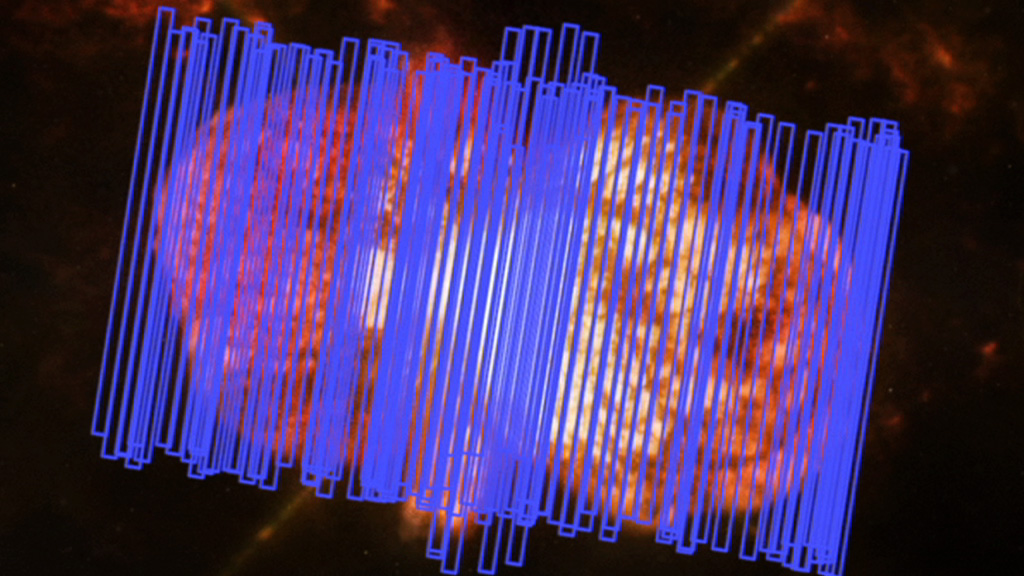
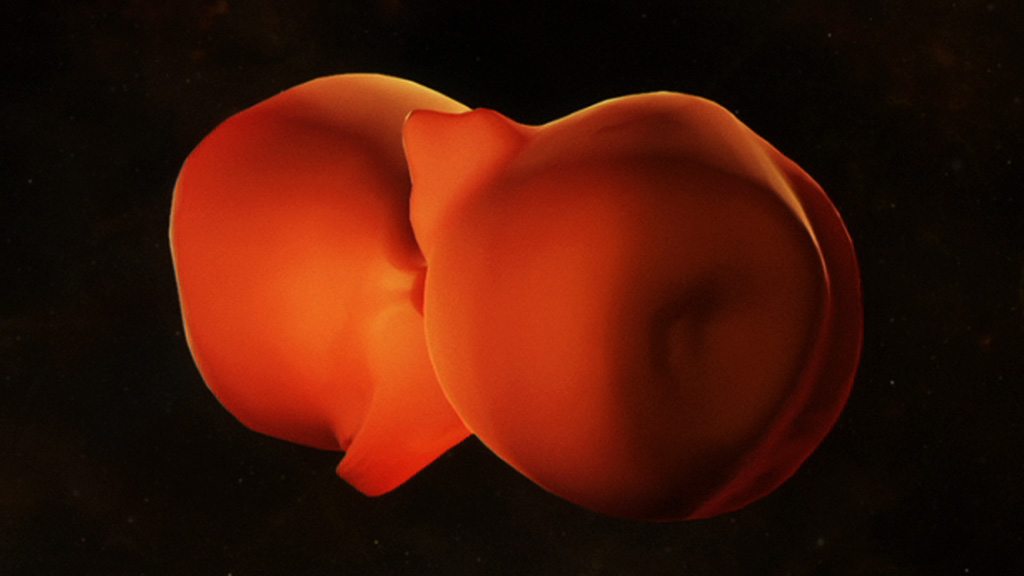

Mini Nebula





Related Stories
For More Information
Story Credits
Lead Visualizer/Animator:
Brian Monroe (USRA)
Visualizer/Animator:
Scott Wiessinger (USRA)
Video Editor:
Scott Wiessinger (USRA)
Producer:
Scott Wiessinger (USRA)
Project Support:
Aaron E. Lepsch (ADNET Systems, Inc.)
Videographer:
Rob Andreoli (Advocates in Manpower Management, Inc.)
Lead Writer:
Francis Reddy (Syneren Technologies)
Brian Monroe (USRA)
Visualizer/Animator:
Scott Wiessinger (USRA)
Video Editor:
Scott Wiessinger (USRA)
Producer:
Scott Wiessinger (USRA)
Project Support:
Aaron E. Lepsch (ADNET Systems, Inc.)
Videographer:
Rob Andreoli (Advocates in Manpower Management, Inc.)
Lead Writer:
Francis Reddy (Syneren Technologies)
Please give credit for this item to:
NASA's Goddard Space Flight Center
Very Large Telescope image courtesy of ESO/G. Hüdepohl
NASA's Goddard Space Flight Center
Very Large Telescope image courtesy of ESO/G. Hüdepohl
Short URL to share this page:
https://svs.gsfc.nasa.gov/11639
Keywords:
SVS >> Astrophysics
SVS >> App
NASA Science >> Universe
https://svs.gsfc.nasa.gov/11639
Keywords:
SVS >> Astrophysics
SVS >> App
NASA Science >> Universe
